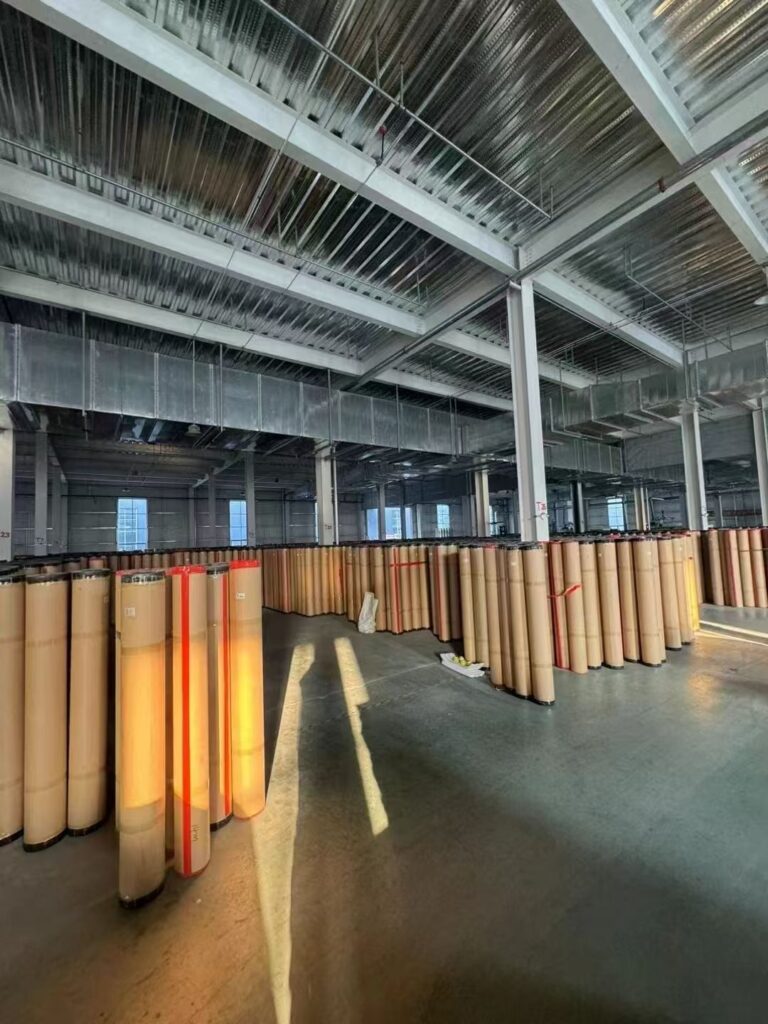Badminton flooring impacts player performance, safety, and durability. As a manufacturer specializing in sports flooring, I know that selecting the right material is about balancing cost and quality.
PVC vinyl is one of the cheapest flooring materials for indoor badminton courts, offering excellent grip, durability, and water resistance. For outdoor courts, modular interlocking tiles are a low-cost, weather-resistant option. Foam-backed carpet or rubber mats are suitable for temporary setups due to their affordability and quick installation.
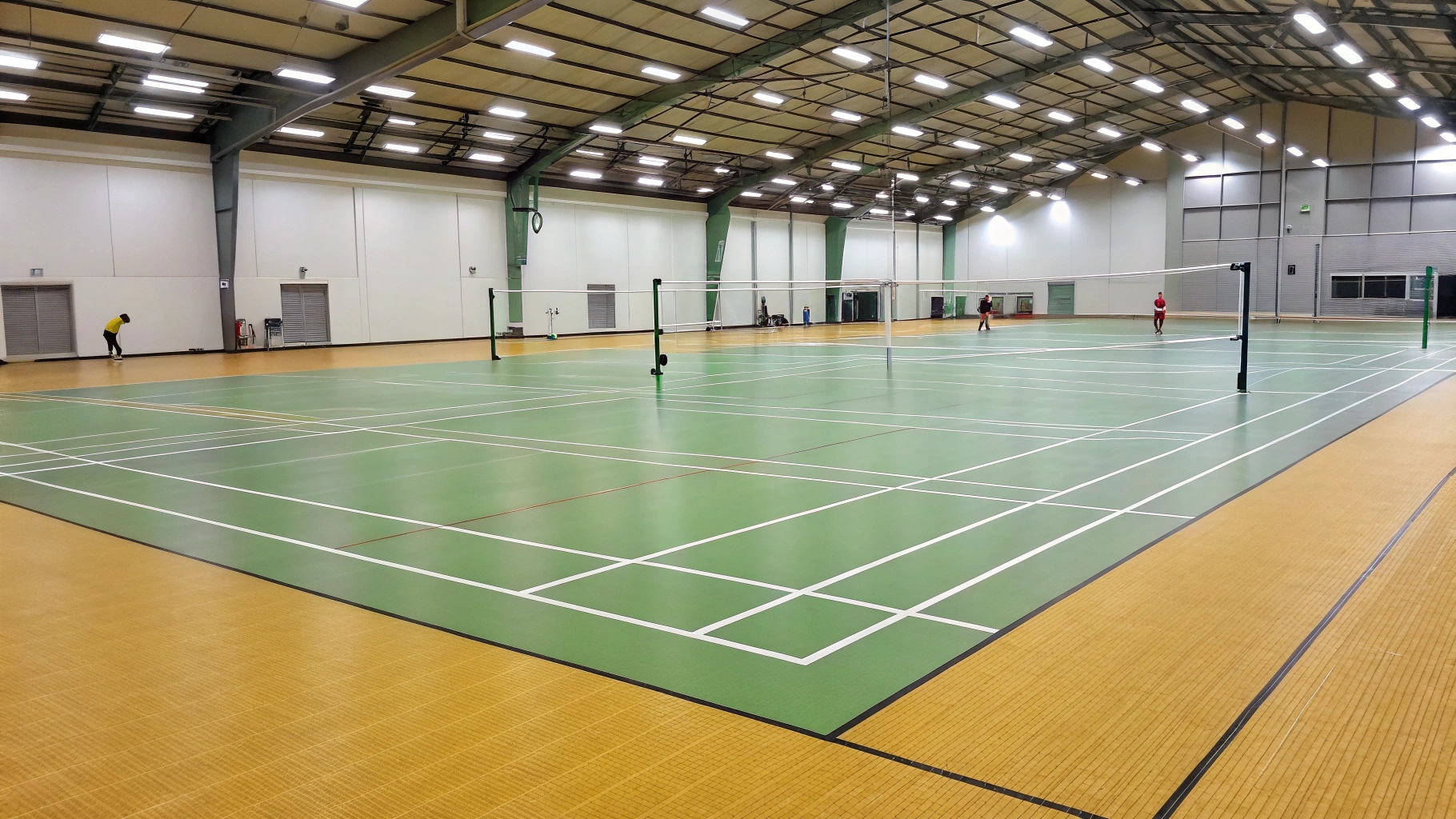
Many budget-conscious buyers hesitate when choosing court flooring. I’ll break down the best options based on durability, affordability, and practicality.
What is the best material for a badminton court?
Badminton courts require flooring that ensures grip, impact absorption, and longevity. I manufacture and supply various flooring options, so I understand what works best for different budgets and use cases.
According to BWF standards, the best material for a professional badminton court is a wooden sprung floor with a wood or approved vinyl surface for optimal grip and shock absorption. For other use cases, PVC vinyl is ideal for budget indoor courts, modular tiles suit outdoor play, and rubber flooring fits multi-use or high-traffic areas.
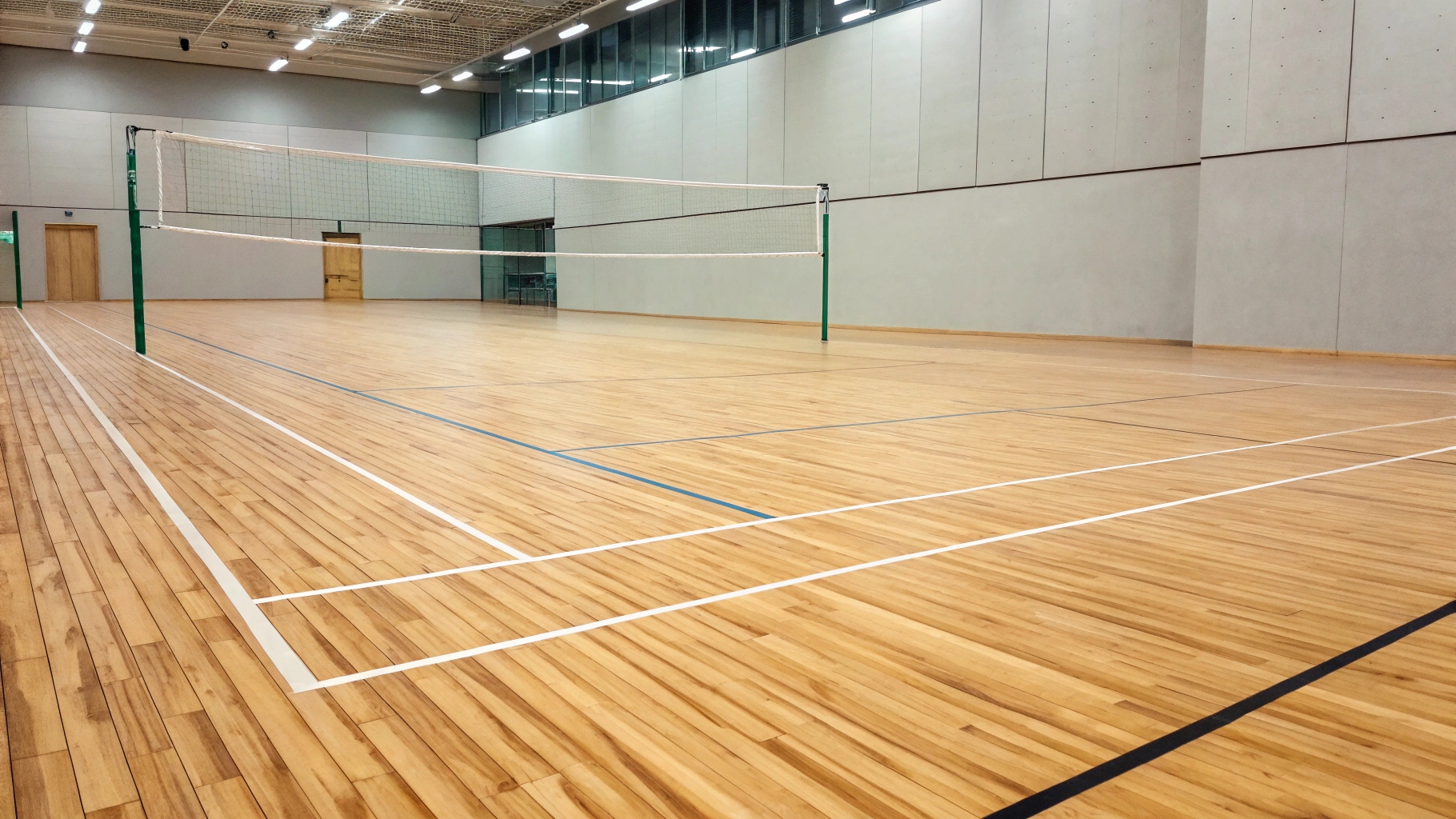
Comparing Different Flooring Materials We Offer
| Material | Cost | Durability | Shock Absorption | Grip | Maintenance |
|---|---|---|---|---|---|
| Wooden Flooring | High | Long | Excellent | High | High |
| PVC Vinyl Flooring | Medium | Long | Good | High | Low |
| Rubber Flooring | Medium | Very Long | Moderate | High | Low |
| Carpet with Foam | Low | Short | Moderate | Medium | Low |
| Interlocking Tiles | Low | Medium | Low | Medium | Low |
I always recommend PVC vinyl for cost-conscious buyers who still want good performance and easy maintenance. Modular tiles work well for outdoor courts that need weather resistance.
What material are badminton courts made of?
As a manufacturer, I supply flooring materials to sports facilities, schools, and distributors worldwide. Badminton courts use a mix of surfaces depending on location and budget.
Badminton courts are made of materials like wood, PVC vinyl, rubber, and modular interlocking tiles. Wooden flooring is used for professional courts due to its superior grip and shock absorption. PVC and rubber are common for budget indoor courts. Outdoor and temporary courts often use modular tiles for weather resistance and easy installation.
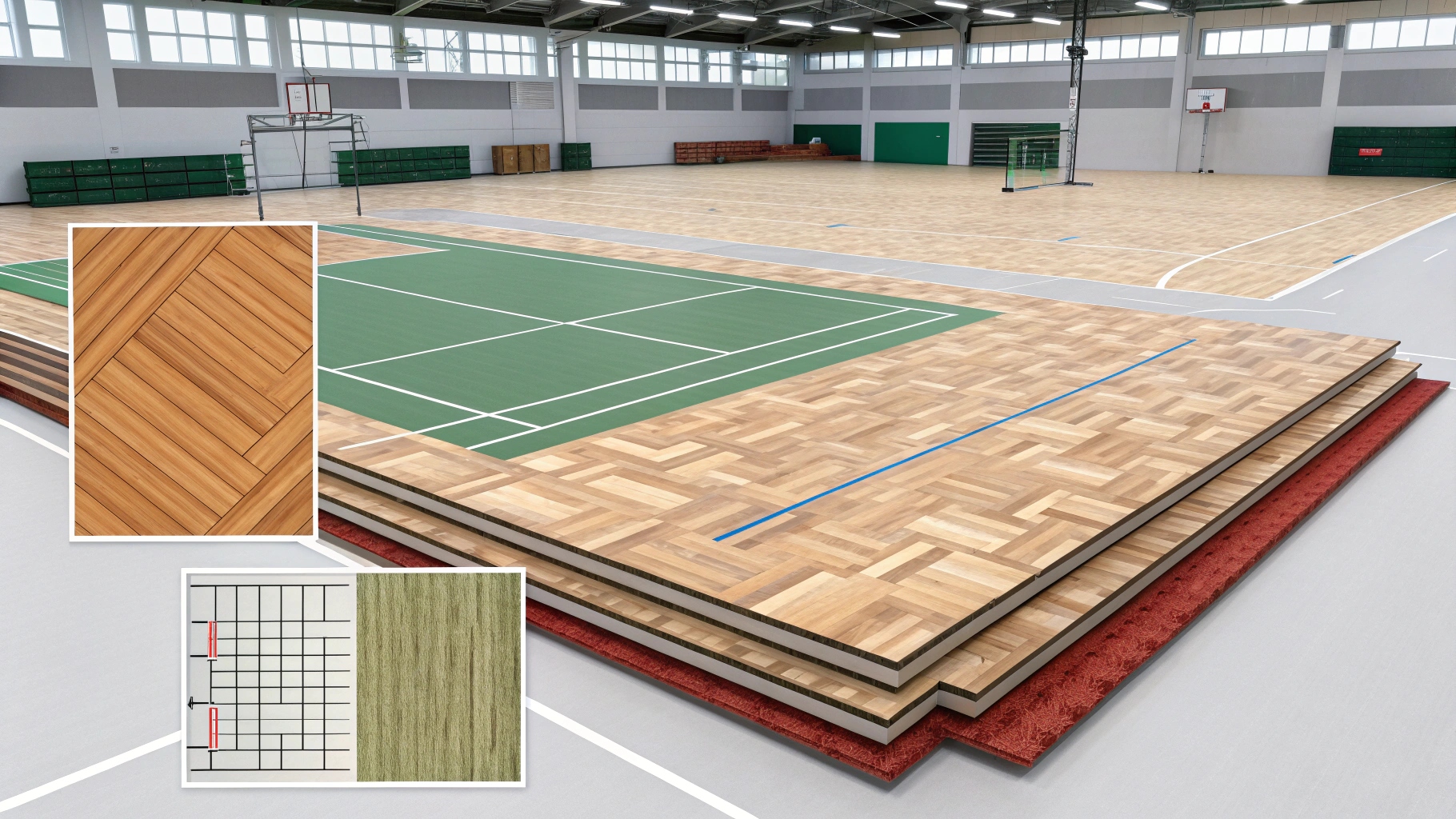
Indoor vs. Outdoor Court Materials We Offer
| Type | Best Material | Key Benefits | Best Used For |
|---|---|---|---|
| Indoor | Wooden or PVC Vinyl | High grip, impact absorption | Professional play |
| Outdoor | Rubber or Tiles | Weather-resistant, durable | Recreational use |
| Temporary | Carpet or Modular Tiles | Easy setup, cost-effective | Events, exhibitions |
If you're setting up an indoor facility, I highly recommend PVC vinyl for its affordability, durability, and grip. For outdoor courts, modular tiles and rubber flooring are the best low-maintenance choices.
Which type of flooring is best for badminton?
I often get asked: "What’s the best flooring for badminton?" The answer depends on budget, location, and purpose. Having supplied sports flooring to India, Vietnam, Russia, and beyond, I know what works in different conditions.
Wooden flooring is best for professional badminton courts because of its excellent grip and shock absorption. For budget indoor setups, PVC vinyl is cost-effective and low-maintenance. Outdoor courts use modular interlocking tiles for durability and weather resistance. Rubber flooring suits high-traffic or multi-use spaces that need long-term durability.
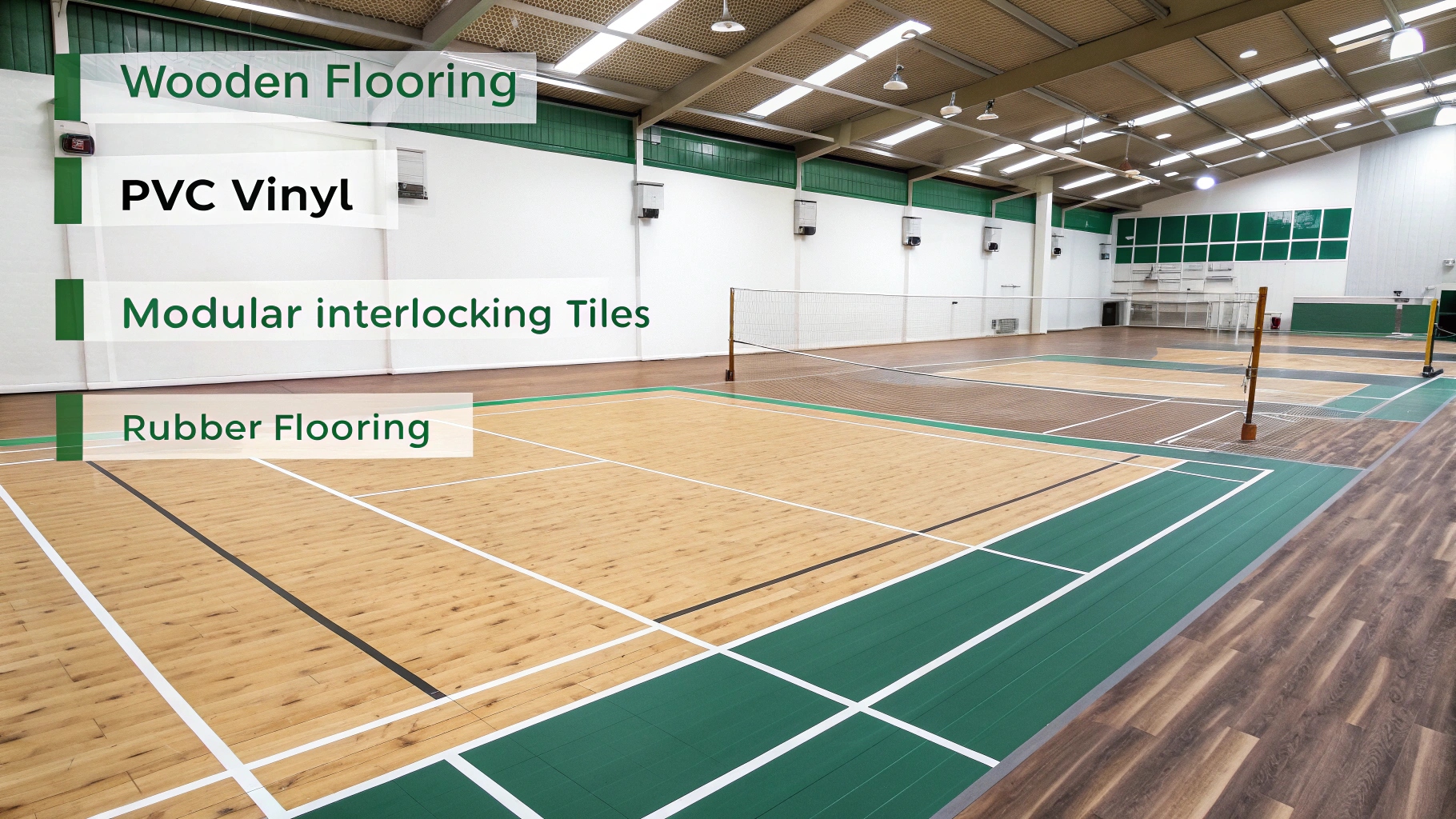
Key Factors in Choosing the Right Flooring
-
Shock Absorption
- Protects players’ joints from impact.
- Wood and PVC provide the best cushioning.
-
Grip & Traction
- Ensures safety and quick movements.
- PVC, rubber, and wood offer high grip.
-
Durability
- Long-lasting surfaces reduce replacement costs.
- Rubber and PVC last for years with minimal upkeep.
-
Maintenance
- Some materials need frequent cleaning and polishing.
- PVC and rubber require less maintenance than wood.
-
Cost & Budget
- We offer multiple solutions to match different price points.
- PVC and modular tiles are the best value-for-money options.
Low-cost badminton flooring should offer shock absorption, good grip, durability, and easy maintenance. PVC vinyl provides the best balance of affordability and performance for indoor use, while modular tiles work well outdoors. Rubber flooring is ideal for high-traffic areas needing extra durability.
Why Work With Us as Your Sports Flooring Supplier?
Are you looking for a reliable supplier of cost-effective badminton court flooring? We have helped hundreds of distributors, wholesalers, and sports facility owners get high-quality flooring at the best factory-direct prices.
*Working with a sports flooring manufacturer offers benefits like factory-direct pricing, fast delivery, and product customization. Reliable suppliers maintain ready-to-ship inventory in various colors and thicknesses, and provide expert support for installation and maintenance. Choosing a direct factory source helps reduce costs, ensure consistent quality, and streamline logistics for bulk orders.
💬 Have questions or need a custom quote? Let’s discuss your project today!
📩 Get Your Free Quote Now – Limited Stock Available!
We offer high-quality, cost-effective badminton court flooring at factory-direct prices. Secure your custom quote today before our next shipment fills up!
📞 Call us now at +86 19912163183
📧 Email: [email protected]
🌍 Visit: sportaflor.com
📦 Fast shipping, competitive pricing, and expert support – Let’s get started!
Conclusion
PVC vinyl and modular interlocking tiles are ideal for budget badminton courts due to their low cost and durability. Professional courts typically use wooden flooring for maximum grip and shock absorption. Rubber flooring is also a practical option for high-traffic or multi-use areas. Each material suits different needs depending on budget and usage.

